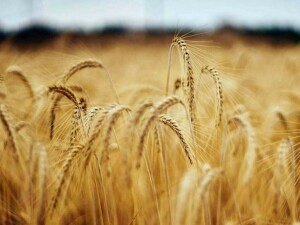Crescent Fibres Limited (PSX: CFL) was set up as a public limited company in 1977 under the Companies Act, 1913 (now, Companies Act, 2017). The company manufactures and sells yarn. It has two manufacturing units located in Sindh and Punjab that has a combined capacity of 67,056 spindles as of FY20.
Shareholding pattern

As at June 30, 2020, 41 percent of the total shares are owned by the directors, CEO, their spouses and minor children. Roughly 10 percent are held by each Imran Maqbool, the CEO, and the directors Humayun Maqbool and Nadeem Maqbool. About 44 percent of the shares are with the local general public; slightly over 7 percent shares are held in modarabas and mutual funds. The remaining about 7 percent shares is with the rest of the shareholder categories.
Historical operational performance
The company has mostly seen a rising topline except for in FY15 and more recently in FY20; the profit margins, however, have been fluctuating over the years. In the last five years, specifically, profit margins declined, bottoming out in FY17, before rising again FY18 onwards.

In FY17, the company witnessed an almost 11 percent rise in its sales revenue. This was attributed to increase in prices of some of the products. However, this did not result in an improvement in gross margin, that reduced to 4.5 percent, due to a simultaneous rise in raw material expense and input costs. This is evident from the cost of production consuming over 95 percent of revenue. With some support coming from other income, and a slight incline in other expenses, net margin was more or less flat at 0.6 percent during the year.

Crescent Fibres remained on its growth trajectory as its revenue increased by over 14 percent during FY18, crossing Rs 4 billion in value terms. This was again attributed to rise in product prices. With cost of production reducing slightly to over 93 percent of revenue, it allowed for some improvement in the gross margin that was recorded at 6.4 percent for the year. With other factors remaining more or less similar, combined with a reduction in finance cost, the effect also trickled down to the bottomline; net margin stood at a higher 1.5 percent. The reduction in finance expense was due to repayments made on the long-term debt that lowered the liability.

In FY19 the company saw its revenue rising by another 19 percent, with sales exceeding Rs 5 billion. With cost of production marginally lower at 92 percent, gross margin was maintained close to 7 percent. This was the highest seen in the last four years. Operating expenses more or less remained unchanged, therefore, operating margin also increased to over 5 percent. However, owing to a rise in interest rates, finance expense made a larger share in revenue, at 2.4 percent. Despite this, the benefit of higher sales was reflected in the bottomline that grew to Rs 113 million, with net margin recorded at 2 percent.

After rising consecutively for four years, revenue contracted during FY20 by 5 percent. This was due to both, a fall in production as well as product prices. Despite the lower revenue, the company was able to increase gross margin as production cost made a lower share in revenue. With most other elements remaining roughly the same, in addition to some improvement in other income, net margin also rose, albeit marginally, to 2.17 percent. The higher income was primarily generated through two sources- a one-off event of liabilities written back amounting to Rs 32 million. Second was the rental income that was posted at Rs 24.7 million, higher than previous year’s Rs 22.4 million.
Quarterly results and future outlook
During the first quarter of FY21, Crescent Fibres’ topline was higher by 5.6 percent year on year. This was attributed to an improvement in product prices. Production cost was only marginally higher in 1QFY21 compared to same period last year therefore gross margin was relatively flat. Due to lowering of interest rates by the government to support the economy during the Covid-19 pandemic, finance cost was lower year on year, allowing net margin to be higher at 3.3 percent.

The second quarter saw a lower revenue compared to the first quarter of FY21. Yet, profit margins were better in the second quarter on the back of lower production costs. This was further supported by other income contributing Rs36 million. Thus, net margin stood at 8 percent for the period. Collectively too, despite topline being lower by 2 percent in 1HFY21 year on year, profit margins were higher due to lower costs.
At the onset of the Covid-19 pandemic, several industries saw cancellation and delay in orders, and supply chain disruptions that’s resulted in a contraction in their revenue. With business activities gradually resuming, there has been some respite. However, the textile sector continues to face several challenges, the most prominent ones being the availability and quality of cotton crop, or the lack thereof, in addition to high cost of doing business. These factors render exports from Pakistan uncompetitive in the global market; more so, with the presence of competition from countries such as Vietnam and India. In the recent past, global trade had also been adversely impacted by the US-China trade war since China is one of the primary export destinations for Pakistan.























Comments
Comments are closed.